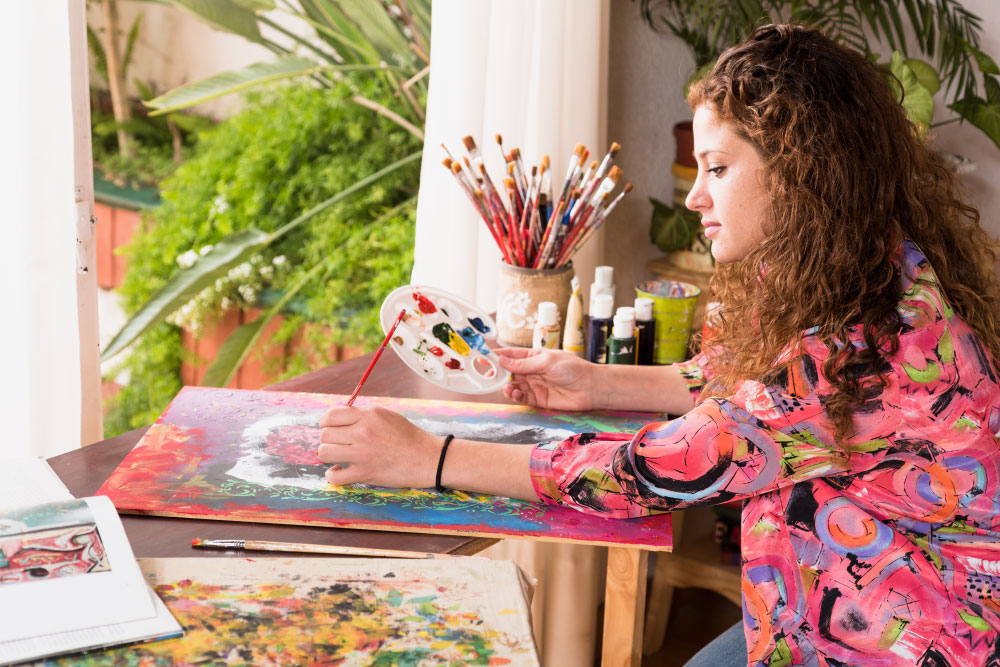Mastering the Art of Digital Brushwork
Digital painting has opened up new horizons for artists, allowing them to create stunning artworks with boundless possibilities. However, mastering this medium requires not only technical skills but also a deep understanding of artistic principles. In this guide, we’ll explore essential digital painting tips and techniques to help you create breathtaking digital artwork.
Choose the Right Software and Tools:
- Selecting Your Canvas: Begin by choosing the right digital painting software and tools. Popular choices include Adobe Photoshop, Corel Painter, Procreate, and Krita. Pair your software with a high-quality drawing tablet for precision and control.
- Custom Brushes: Familiarize yourself with the brush library in your chosen software. Many digital painting programs offer a wide range of brushes for various effects, from realistic to abstract.
Understand Layers and Blending Modes:
- Layered Approach: Layers are your best friend in digital painting. Use them to separate elements of your artwork, such as background, foreground, and characters. Experiment with blending modes to create unique color and texture effects.
- Blending Brushes: Explore brushes specifically designed for blending colors. These brushes help you achieve smooth transitions and realistic shading.
Master the Basics of Color Theory:
- Color Harmony: Understanding color theory is crucial. Learn about color wheels, complementary colors, and color harmonies to create visually pleasing compositions.
- Color Picker: Use the color picker tool to select and sample colors from your reference images or photographs.
Start with Sketching:
- The Blueprint: Begin your digital painting with a rough sketch. This serves as the foundation for your artwork and helps you plan the composition and proportions.
- Adjustable Sketch: Keep your sketch on a separate layer, allowing you to refine and adjust it as needed.
Practice Value and Contrast:
- Light and Shadow: Pay close attention to values (the range from light to dark) in your painting. The strong contrast between light and shadow adds depth and dimension to your artwork.
- Value Check: Convert your artwork to grayscale occasionally to evaluate the value structure without the distraction of color.
Experiment with Textures:
- Texture Brushes: Use texture brushes to add depth and tactile quality to your digital paintings. Experiment with different brush presets to create interesting surface textures.
- Texture Overlay: Overlay textures, such as fabric or paper, to add a tactile quality to your artwork.
Refine Details and Edges:
- Precision Matters: Pay attention to details and edges. Refine smaller elements and consider the hardness or softness of edges to create focal points and depth.
- Zoom In: Zoom in on your artwork to work on fine details, but remember to zoom out periodically to see the overall impact.
Use Reference Images:
- Visual Guides: Reference images can be incredibly helpful. They guide anatomy, lighting, and other intricate details you might not be familiar with.
- Create a Reference Board: Compile a reference board with various images related to your artwork. This can include photos, illustrations, and color swatches.
Experiment and Iterate:
- Don’t Fear Mistakes: Digital painting allows you to experiment freely. If something doesn’t work, don’t be afraid to undo it or start over. Artistic growth often comes from trial and error.
- Save Versions: Save multiple versions of your work as you progress. This allows you to compare different stages and revert to earlier versions if needed.
Seek Feedback and Learn:
- Community and Learning: Share your work with online art communities or seek feedback from peers and mentors. Continuous learning and constructive critique are invaluable for growth.
- Tutorials and Workshops: Consider taking online tutorials or workshops to expand your skills and learn from experienced artists.
In Conclusion:
Digital painting is a dynamic and versatile medium that offers endless creative possibilities. To create stunning digital artwork, remember to choose the right software and tools, understand the importance of layers and blending modes, master color theory, start with a solid sketch, and practice techniques like value and contrast, texture, and refining details. Don’t be afraid to experiment, use reference images, and seek feedback from others to continually improve your digital painting skills. With dedication and practice, you can unleash your artistic potential and create breathtaking digital masterpieces.

Jass
Jass earned her bachelor’s degree in Computer Science, transitioning into a profession as a content writer. With a keen mastery of words, she takes pleasure in expressing her thoughts and ideas creatively. Her ability to captivate audiences with her imaginative write-ups stands out as one of her notable strengths.



